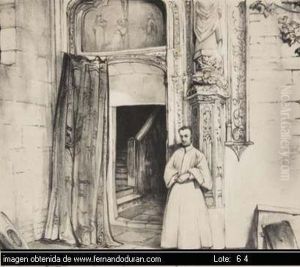George Hibbert Paintings
George Hibbert was not a professional artist, but rather a prominent English merchant, politician, and art collector. Born on January 14, 1757, in Manchester, he was the son of Robert Hibbert, a wealthy West Indian merchant and plantation owner. George Hibbert is best known for his involvement in trade, particularly with the West Indies, and as a key figure in the British mercantile community of his time.
Although Hibbert did not create a legacy through artistic works, he made significant contributions to the cultural landscape through his patronage and collecting. He amassed a considerable library and art collection, which was indicative of his wealth and status. Hibbert was also a member of the Committee for the Affairs of the West India Merchants, which lobbied on behalf of the interests of those involved in the trade with the West Indies.
In addition to his commercial activities, George Hibbert served as a Member of Parliament for Seaford from 1806 to 1812. He was a supporter of the slave trade, a stance that was common among merchants of his era who had interests in the West Indies. However, he was also known for his philanthropy and involvement in various cultural institutions. He contributed to the development of the Royal National Lifeboat Institution and was a founding member of the Royal Institution.
George Hibbert's involvement in the arts was more as a collector and patron than as an artist or creator. His legacy in the art world is tied to the pieces he collected and the support he provided to cultural institutions. The wealth generated from his merchant activities enabled him to acquire significant works, which later became valuable to art historians and collectors.
Hibbert died on October 8, 1837, in Munden, Hertfordshire. While his name may not be widely recognized in the context of art history, his influence as a patron and collector during his lifetime was notable. Collections that were once under his ownership have contributed to the holdings of various institutions and continue to be of interest to art historians and enthusiasts.
